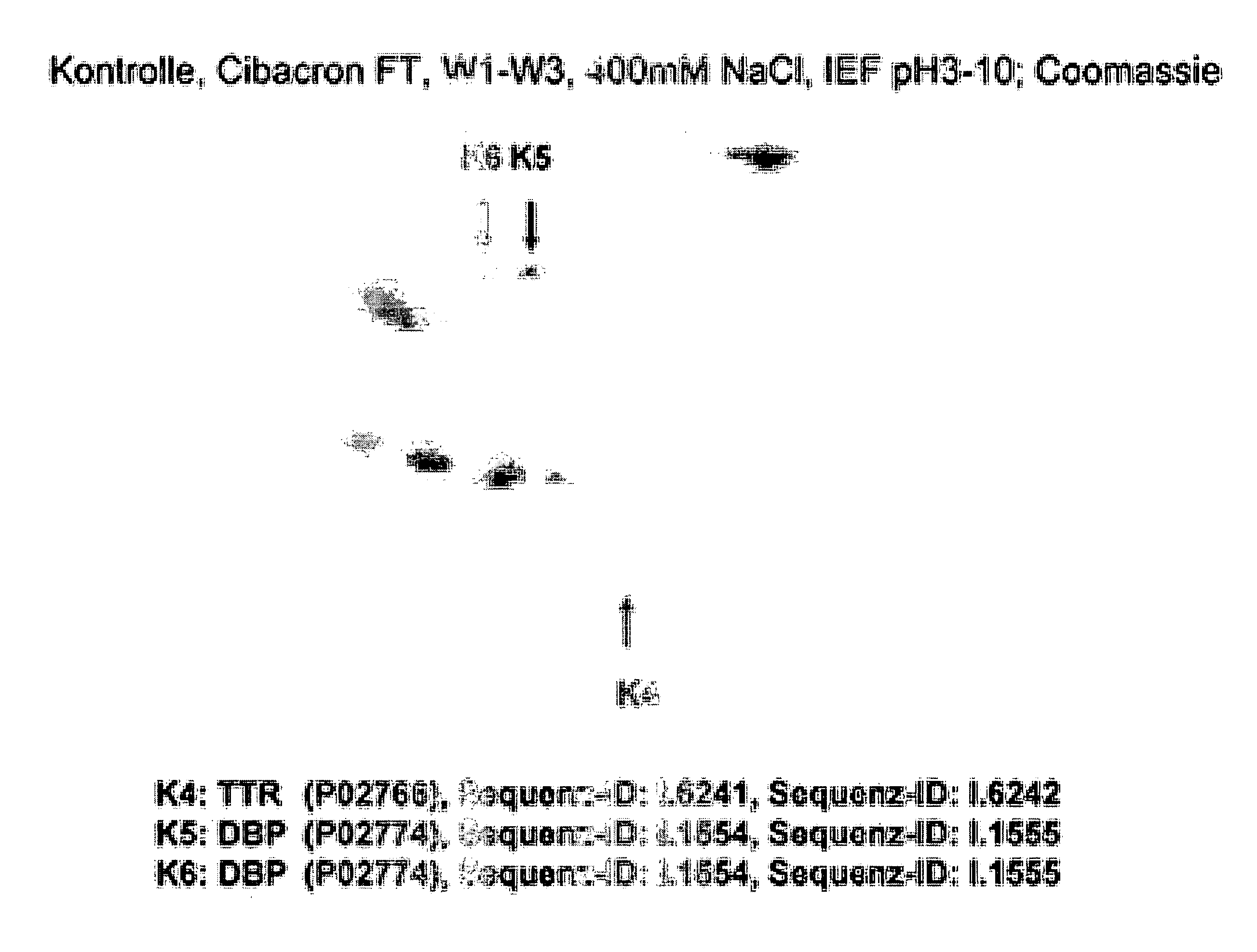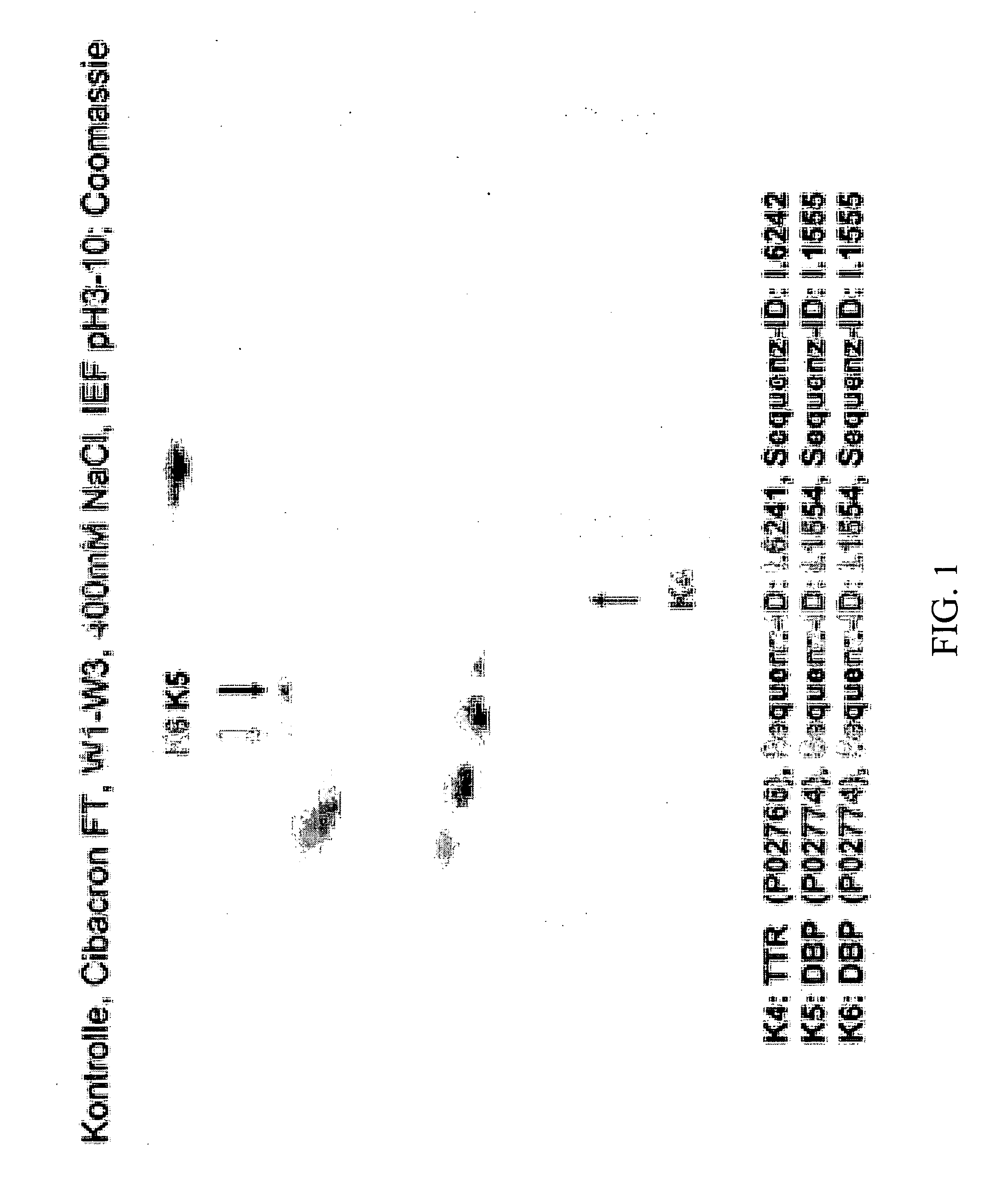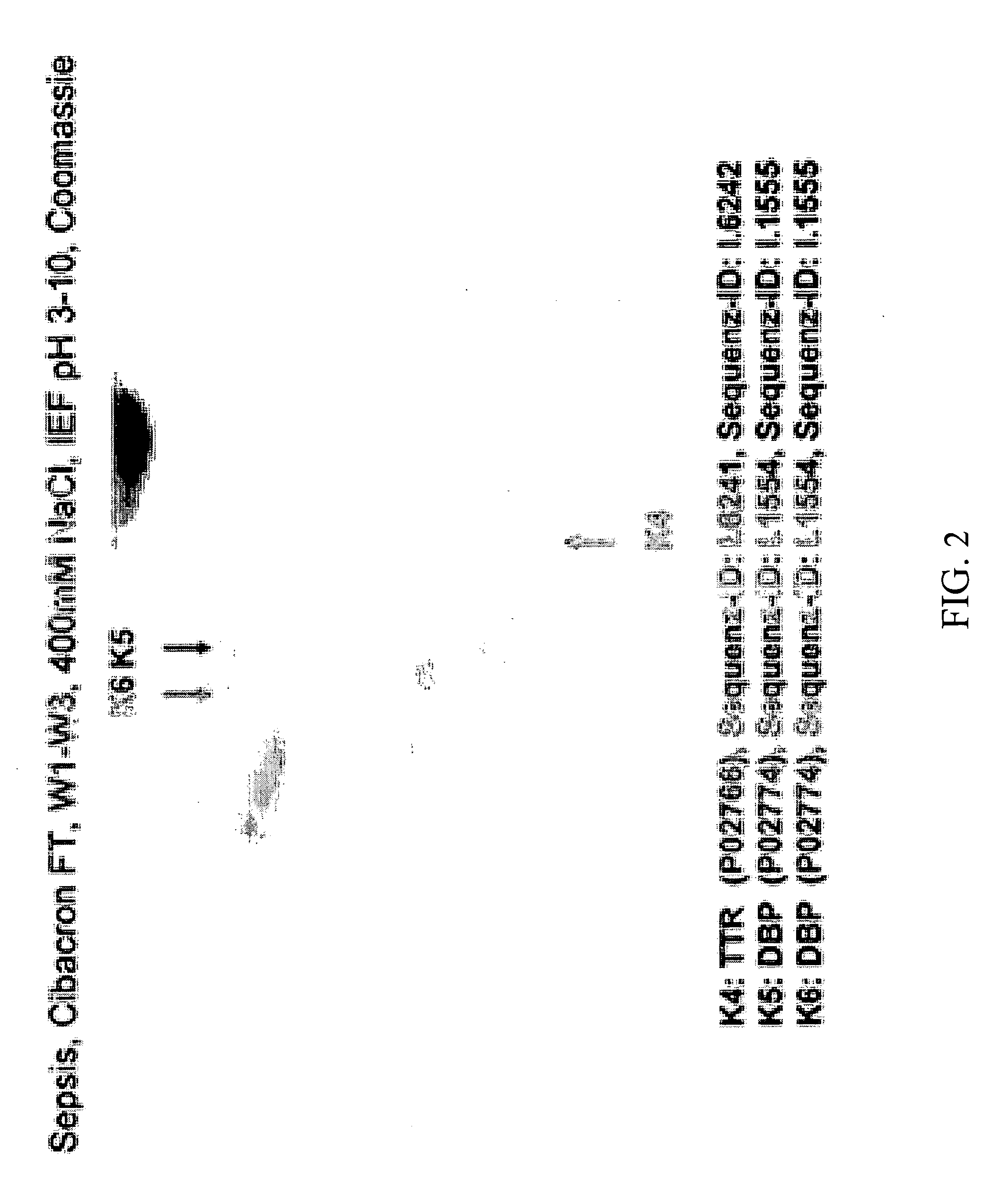Method for Recognizing Acute Generalized Inflammatory Conditions (Sirs), Sepsis, Sepsis-Like Conditions and Systemic Infections
a generalized inflammatory and in vitro detection technology, applied in the field of in vitro detection of acute generalized inflammatory conditions (sirs), sepsis, sepsis-like conditions, systemic infections, can solve the problems of reducing the success rate of the most advanced or experimental treatment methods of many medicinal fields, and reducing the risk of new therapies
- Summary
- Abstract
- Description
- Claims
- Application Information
AI Technical Summary
Benefits of technology
Problems solved by technology
Method used
Image
Examples
embodiment 1
SIRS
[0134] Studies of differential gene expression with patients suffering from SIRS.
[0135] Whole blood samples of patients who were under the care of a surgical intensive care unit were examined for the measurement of the differential gene expression in connection with SIRS.
[0136] Control samples were whole blood samples of the patients that were drawn immediately before the operation. No one of these patients showed an infection and / or clinical signs of SIRS (defined according to the SIRS-criteria [4]) at this point of time or before the stationary treatment.
[0137] Additionally, whole blood samples of the same patients who had been subjected to a surgery, were drawn four hours after the operation (patient samples). Each of these patients developed SIRS after the surgery. A range of characteristics of the patients suffering from SIRS are shown in table 1. In Table 1, data with regard to age, gender, diagnosis as well as duration of the extracorporeal treatment are given.
TABLE...
embodiment 2
SIRS
[0149] Study of the gene expression of three patients suffering from SIRS, and one control.
[0150] The gene expression of three patients suffering from SIRS and one control were measured. All patients developed SIRS as described in the criteria according to [4]. The control sample was taken from one patient who was subjected to surgical treatment, but who did not show any SIRS during this stationery treatment. The date of the patients suffering from SIRS and the control are summarized in table 4.
TABLE 4Characteristics of the samples of patients and controlsApacheScoreSAPS IIPatientGenderAgeDiagnosis[point][point]1male50coronary heart1836disease2male70caecuM_perforation19643male67aortic valve921insuffiency1male70fracture of the112skull cap
[0151] After the whole blood had been drawn, the total RNA was isolated using the RNAeasy-Kit according to the producer's (Quiagen) instructions. Subsequently, the cDNA was synthesized from the total RNA by means of reverse transcription with...
embodiment 3
[0162] Study of the gene expression of one patient suffering from an early sepsis and one control sample.
[0163] The gene expression of one case of an early sepsis and one control sample were measured. The patient's data are summarized in table 7.
TABLE 7Data of the samples of patients and controlsApacheGen-AgeWeight / IntercurrentScoreSAPS IISelection ofder[a]HeightMain diagnosisdiagnosisOperationsIndication[point][point]clinical dataPatientmale7078 kg / septic shockintestine-,1. Anastomotic-Sepsis / 1964temperature: 35.2° C.178 cmafter caecuminstableand sigma re-septicheart rate: 97 / minperforation andsternumresection, rectumshockMAP 1: 62 mmHg;post operativedead endart. PH: 7.29anastomotic leakblockageNa: 135 mmol / l;2. PunctationCreatine: 757 mmol / l;tracheotomyCholesterol: -(Griggs)Breathing rate: 16 / min3. re-wiringSyst. BP: 105 mmHg;4. subtotalHaematocrit: 33%hemiclolectomyTotal number ofright sideleucocytes: 131005. definitiveUrea: 19 mmol / l;ileostomyDiast. BP: 40 mmHg;surgery...
PUM
| Property | Measurement | Unit |
|---|---|---|
| pressure | aaaaa | aaaaa |
| pressure | aaaaa | aaaaa |
| concentration | aaaaa | aaaaa |
Abstract
Description
Claims
Application Information
 Login to View More
Login to View More - R&D
- Intellectual Property
- Life Sciences
- Materials
- Tech Scout
- Unparalleled Data Quality
- Higher Quality Content
- 60% Fewer Hallucinations
Browse by: Latest US Patents, China's latest patents, Technical Efficacy Thesaurus, Application Domain, Technology Topic, Popular Technical Reports.
© 2025 PatSnap. All rights reserved.Legal|Privacy policy|Modern Slavery Act Transparency Statement|Sitemap|About US| Contact US: help@patsnap.com



